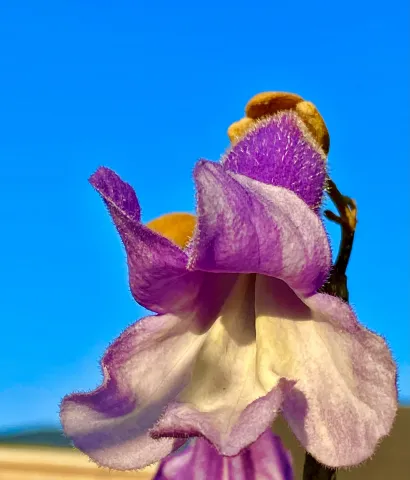Paulownia: The Purple Roadside Tree

By: Steve Roark
Volunteer, Cumberland Gap National Park
Paulownia is most often noticed when it blooms in the Spring, right now in fact. Its large tubular purple blooms are quite showy along roadsides.
Paulownia (Paulownia tomentosa) is also called royal princess tree, empress tree, and lilac tree. It is not native to the U.S. but was introduced as an ornamental landscape tree around 100 years ago. It’s a very prolific seed producer and has since spread until it can now be found everywhere, especially along roadsides and other disturbed areas.
The tree has several showy features. The leaves are very large and more or less heart shaped. They can be over 2 feet across, but most average around 12 inches. The late April flowers bloom before the leaves come out and can turn the entire top of the tree purple. In the fall the tree can be identified by the hanging clusters of round seedpods that start out green but turn brown when they mature and release their seed. The seed is very small, lightweight, and winged so it can travel a good distance on the wind. Each seedpod is a little over one inch in diameter and can contain 1500 seed, so a large tree can produce a million seed a year.
The bark of paulownia is grayish brown, often with light colored stripes running up and down the tree. Older trees have thicker bark broken up by furrows. The tree can grow incredibly fast, one inch in diameter each year or more. The wood is soft, light brown, and very light weight.
Paulownia is often mistakenly called "Catawba” or “catalpa" tree, which is another species entirely. Norther catalpa (Catalpa bignonioides) does produce large heart shaped leaves and has bark similar to paulownia. But catalpa has white blooms instead of purple and produces foot long "green bean" looking seedpods.
Paulownia is not utilized for wood in the U.S. but is in high demand in Japan. They have almost a religious reverence for the wood, and use it for furniture, wooden instruments, gift boxes, and many other goods. They are willing to pay a high price for the wood, but it must be slow growing, something like six growth rings per inch.
Paulownia is considered an exotic invasive plant, and can easily outcompete native trees, and in sufficient numbers negatively impact forest ecosystems.
- Log in to post comments